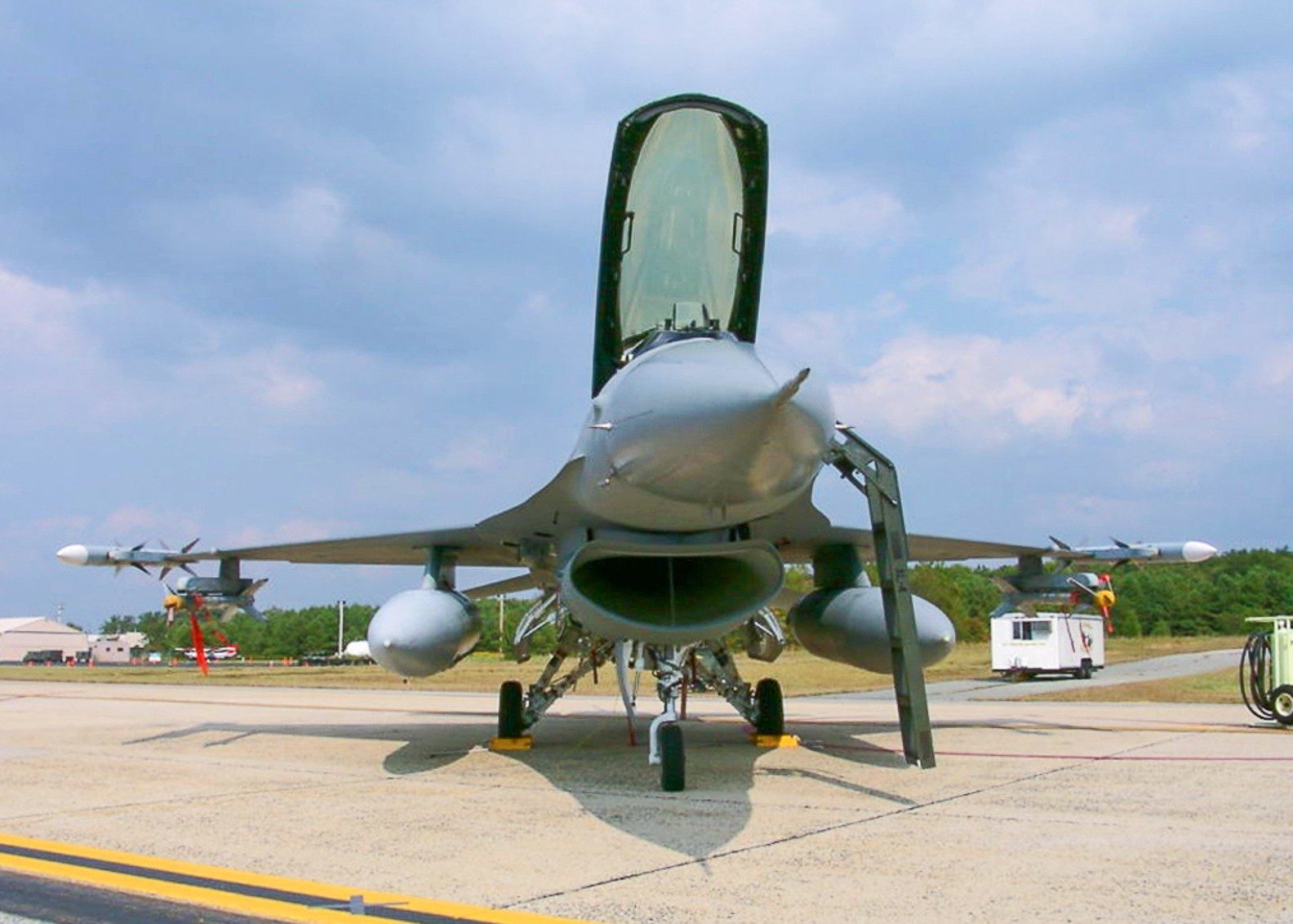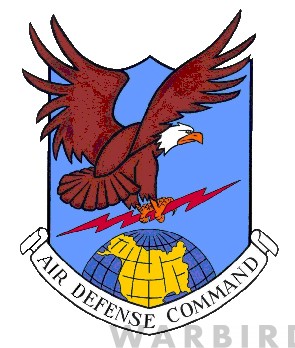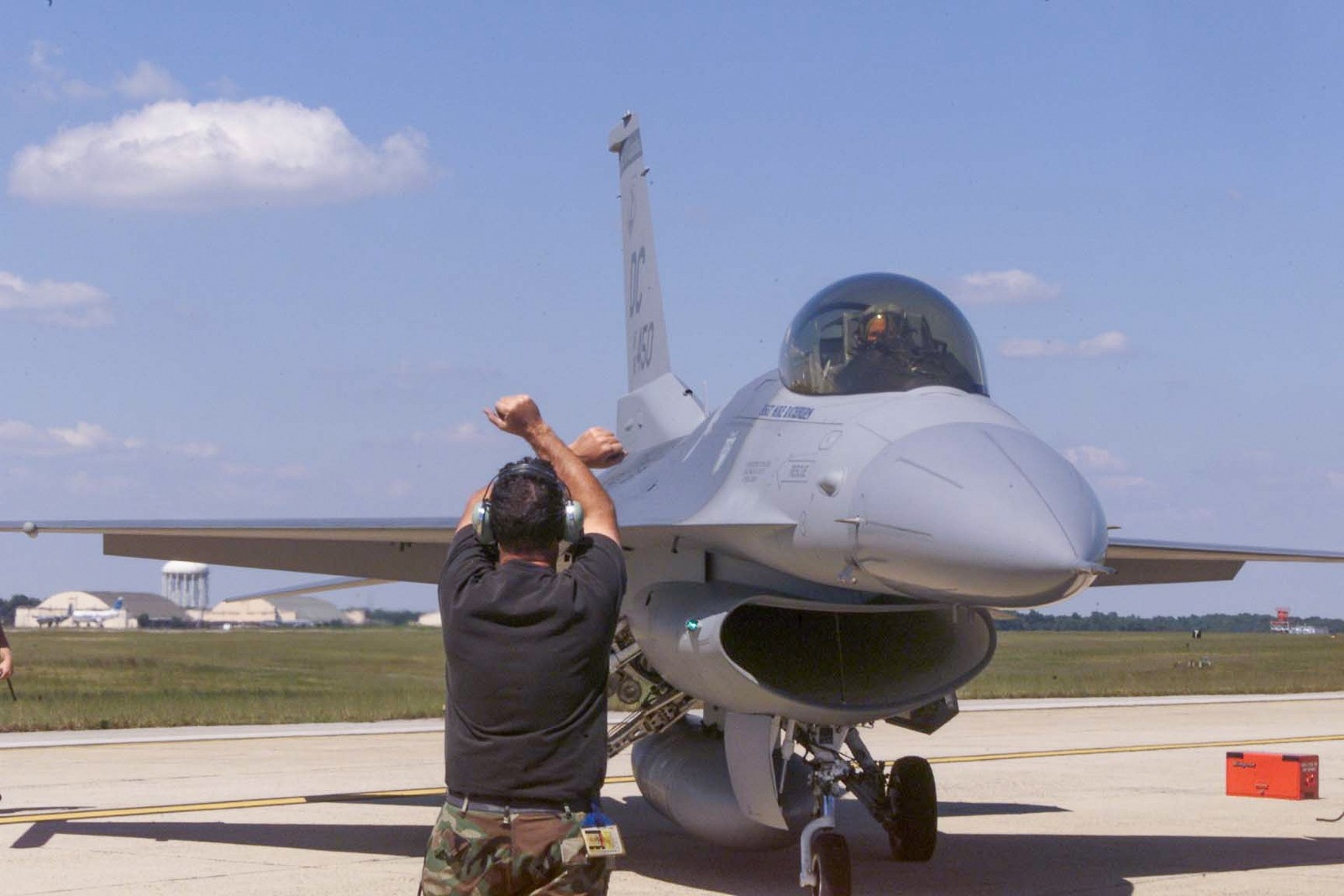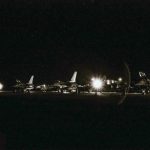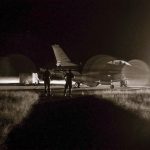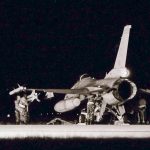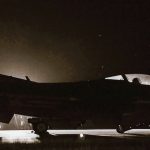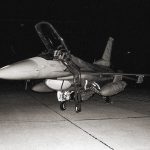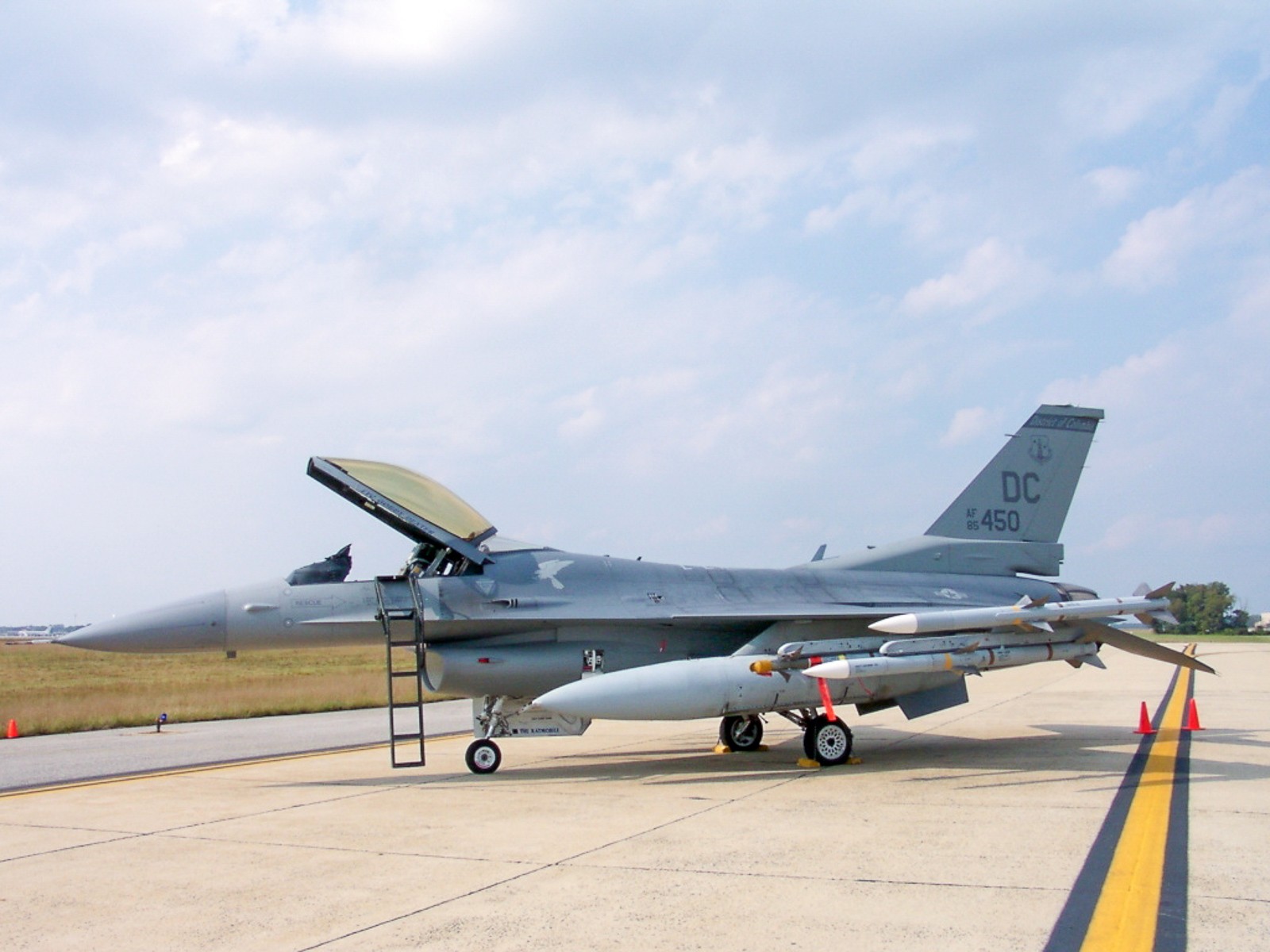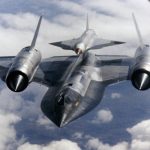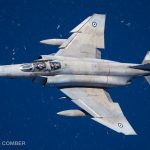For those of us old enough to properly remember this day 20 years ago, it left an indelible scar that will likely remain with us for the rest of our lives… It’s still not an easy subject for discussion, especially given recent events, so rather than disappear down any number of rabbit holes those conversations might conjure, we thought our readers might like to hear what it was like for those who served with the 113th Wing Capital Guardians DC Air National Guard on September 11th, 2001 – our first and lonely line of defense in that seemingly forgotten theatre of combat surrounding Washington DC that day. And one of our own belonged to this unit, Stephen Chapis; we feel sure that you will find his narrative as gripping and relevant as we did. On a personal note, I still recall the eery, nighttime roar of the 113th Wing’s F-16s – afterburners blazing – as they scorched over my home in Northern Virginia on regular occasions during the weeks following 9/11. Despite my unease at seeing such patrols and not knowing what they might be chasing, it was decidedly reassuring to see them guarding our skies…
DARKEST OF DAYS 113th WING on 9/11
by Stephen Chapis
For the members of the 113th Wing, District of Columbia Air National Guard, Tuesday, September 11, 2001, was their first day back to work after returning from Red Flag two days prior. Upon realizing that America was under attack, and with smoke billowing from the Pentagon clearly visible from their flightline at Andrews Air Force Base, the Capital Guardians swiftly organized Combat Air Patrols over Washington, D.C., readying their F-16Cs for a new kind of warfare.
DEFENDING NORTH AMERICA
Before delving into the details regarding the 113th Wing on 9/11, it’s perhaps best to discuss a little history regarding the aerial defense of the homeland, and how the organizations came to be…
Aerospace Defense Command (ADC) was created in 1946 as an integrated air defense system for the Continental United States (CONUS). In late 1956, as the Cold War became yet more frigid, the Joint Canadian-U.S. Military Group recommended the establishment of a defense network of the entire North American continent. Consequently, North American Air Defense (NORAD) was established in February 1957, with ADC forming a major component. At the height of the Cold War, ADC consisted of 93 active duty USAF interceptor squadrons, 76 ANG interceptor squadrons, Navy fighter squadrons, USAF and USN airborne early warning squadrons, as well as radar and anti-aircraft missiles units. All of these units were poised to repel any attack by Soviet bombers flying over the North Pole in the first strike on North America.
In 1977, both Congress and the USAF Chief of Staff instituted major re-alignments in order to reduce costs, and in 1979 ADC was inactivated and interceptor fighter squadrons were placed under Air Defense, Tactical Air Command (ADTAC). Throughout the 1980s, the number of interceptor squadrons slowly dwindled, followed by an even sharper reduction after the Soviet Union dissolved in 1989. On the morning of September 11, 2001, NORAD had just 14 fighter aircraft available at seven alert sites across the entire North American continent! On that morning, the Northeast Air Defense Sector (NEADS) was defended by a pair of Massachusetts ANG F-15A Eagles of the 104th Fighter Wing (FW) at Otis Air National Guard Base and a detachment of two F-16ADFs from the North Dakota ANG 119th FW at Langley AFB, Virginia.
Whereas all other ANG units report to their respective state governors, the District of Columbia ANG reports directly to the President of the United States. Although the Block 30 F-16Cs of the DC ANG 121st FS were parked a mere 11 miles from the Pentagon, they were not part of NEADS. The events of that fateful morning would radically change the 113th in the post-9/11 world.
BACK TO THE ROUTINE, UNTIL…
In the two weeks prior to September 11, 2001, the 113th had deployed from Andrews AFB in Clinton, Maryland to Nellis AFB in Las Vegas, Nevada, to take part in the Red Flag military exercises as part of their spin-up for an upcoming deployment to Operation Southern Watch in the skies over Iraq. Personnel and aircraft had returned to Andrews on Saturday, September 8 and were off-duty Sunday and Monday. On that gorgeous, fateful Tuesday morning the Capital Guardians had returned to their routine duties, but that would change forever in the coming hours…
At 0800hrs in the 121st FS Operations Building adjacent to the flightline, several officers and NCOs gathered for the morning maintenance meeting. Those in attendance included then-Lieutenant Colonel (Lt Col) Marc “Sass” Sasseville, Director of Operations 121st FS; then-Captain (Capt.) Brandon “IGOR” Rasmussen, and then-Major Daniel “Razin” Caine, who was the Supervisor of Flying (SOF) that day. At the same moment, American Airlines Flight 11, a Boeing 767-223, took off from Boston-Logan International Airport bound for Los Angeles International Airport (LAX). As the DC Guardsmen organized the flight schedule for the coming week, Mohamed Atta launched the al Qaeda terrorist plot at 0814hrs when he hijacked American 11 over Albany, New York, and turned the aircraft towards New York City.
Twenty-eight minutes after Atta took control of that airliner, United Airlines Flight 175, a Boeing 767-222, en route from Boston Logan to LAX, was also hijacked. Simultaneously, the F-15s at Otis were ordered to battle stations and the scramble order came just four minutes later at 0845hrs. One minute later the course of American history was forever and horrifyingly altered when Atta flew American 11 into World Trade Center 1 (North Tower) at 465mph. The Eagles at Otis were wheels up at 0852hrs.
Back at Andrews, the maintenance meeting was interrupted just before 0900hrs when someone cracked the door open to inform the group that a plane had crashed into the World Trade Center (WTC) and then closed the door. In a 2016 interview, now-Brigadier General (Brig Gen) Caine recalled, “We all thought the weather must be bad in New York City and it was a case of a light airplane flying into a building inadvertently.” Meanwhile, in northern Virginia, Technical Sargent (TSgt) Ralph Huppert, a bomb loader with the 113th Aircraft Maintenance Squadron (AMS), was on his way to the base when he heard the news of the first plane strike on the radio. He wondered to himself, “What kind of idiot can hit a building on such a clear day?”
A few minutes after hearing the news that an aircraft had struck the WTC, the planning meeting adjourned and Maj Caine and the others went into the lounge where a crowd had gathered around the television, watching the tragedy unfolding at Tower 1. Within minutes, they were stunned to see United 175, flown by Marwan al Shehhi, slam into WTC 2 (South Tower) at 0903hrs. Today, Brig Gen Caine vividly remembers that moment, “We all stood there in silence as the second aircraft came into the picture and struck the second tower. We knew immediately that our country was under attack. You could have heard a pin drop for the first few seconds and then it was like a switch was thrown and we got to work. I went to the ops desk and picked up the phone and called the bomb dump and told them to uncrate the live AIM-9s and bring them around. They did not have a TV down there, so they thought I was nuts.” Out on the Dulles Toll Road, TSgt Huppert heard the news of the second tower strike and mashed his accelerator – making the rest of his commute at high speed. A naval officer passed him at one point, the two of them briefly exchanging expressions of disbelief!
The air war over the United States was just beginning. By the time United 175 struck Tower 2, American Airlines Flight 77 had been under the control of hijacker-pilot Hani Hanjour for almost ten minutes. Like his fellow terrorists, Hanjour turned off the transponder, which kept flight controllers from seeing the Boeing 757’s exact heading, altitude, and airspeed. At the 121st Ops Desk, Lt Col Sasseville had a phone to each ear. When Caine hung up the phone with the bomb dump, he immediately called the unit’s Secret Service contact and asked what the Capital Guardians could do to help. He was told that they would call him back. He then attempted to contact Maj Billy “Hutch” Hutchinson who was leading a three-ship air-to-ground training mission over North Carolina. Caine was unable to contact Hutch directly due to the distance, so he did so through the Tennessee ANG KC-135 that was refueling the three DC Vipers. Caine ordered Hutch and his wingmen to RTB (Return to Base) as quickly as possible.
Meanwhile, Capt Rasmussen and then-1st Lieutenant Heather “Lucky” Penney were leaning on the desk because, as now-retired Maj. Rasmussen said in a recent interview, “The ops desk is where we get our ‘go’ orders.” As Caine finished talking to the distant KC-135, another phone rang as he recalls; “It was a military aid at the Presidential Emergency Ops Center (PEOC) at the White House. He said, ‘Get anything you can airborne immediately; the nation is under attack.’ That is when General Wherley walked in.” Brig Gen David F. Wherley, Jr. (1947-2009) was the 113th Wing Commander on 9/11. Rasmussen recounted this moment, “General Wherley took the phone from Razin and said, ‘They’re loading missiles. You guys get ready to step while I get permission to use them.’” The aid at the PEOC was on another phone with a White House official who was face-to-face with Vice President Dick Cheney, who gave the order to get fighters airborne and do whatever necessary to protect the White House and take out any aircraft that threatens the Capitol. Gen Wherley took this to mean that his pilots would launch “weapons-free”. The Capital Guardians had their “go” orders.
In June 2016, now-Major General (Maj Gen) Sasseville talked about what he called the shortest flight briefing in history, “Razin, Lucky, IGOR, and myself, plus the guys airborne on the training sortie were pretty much the full-time cadre of pilots that day. We’d just come back from Nellis and all the traditional Guardsmen went back to their civilian jobs. I said pretty much what we were going to do is point defense. Lucky and I would launch immediately without weapons so Razin and IGOR would wait until they had AIM-9s loaded.” They would launch as Wild Flight. They had no operational weapons other than the 20mm TP (Target Practice) rounds in their wing-root mounted M61A1 Gattling gun – such ammunition would be about as effective at shooting down an airliner as the other kind of TP…
When Sass wrapped up the briefing, he and Lucky went to life-support to suit up and it was there that they discussed the ominous tactics they’d have to employ if they had to bring down an airliner. Sasseville continued, “I was an airline pilot, so I knew that the TP ammo would do nothing but go through the skin. Even if it hit a fuel tank it may not set off the spark to blow it up. Even if it did explode it might [not] be enough to bring it down. Even a heavily damaged airliner can still fly – look what happened with that DC-10 in Sioux City (referencing United Airlines Flight 232, a DC-10 which crash-landed in Sioux City, Iowa on July 19, 1989, after suffering the catastrophic failure of its tail-mounted engine, which led to the loss of all flight controls). So, we knew we’d have to drop the jet. We’d have to make it stop flying.”
With reports coming in that the missing American 77 was potentially headed south, NEADS scrambled the North Dakota ANG F-16ADFs (Quit Flight) out of Langley at 0924hrs, but the standard Cold War-era scramble procedure was for the Vipers to head east while climbing to 29,000 feet, which is what Quit Flight did for 60 miles before they were vectored northwest towards Baltimore-Washington International (BWI) Airport. While Quit Flight was getting airborne, hijacker-pilot Ziad Jarrah stormed the cockpit of United Flight 93, a Boeing 757, switched off the transponder, and turned back towards his assigned target.
It was now 0937hrs and Huppert was struggling to navigate through rush hour traffic on the crowded Beltway when Hanjour flew American 77 into the west side of the Pentagon at 530mph. In a 2014 interview, Huppert recalled, “I saw the smoke rising into the air and I could smell it as I crossed the Woodrow Wilson [Bridge] because the wind was carrying it south down the Potomac. When I got to the shop, I immediately went to the flightline, where I joined the guys in dropping the travel pods and TERs and loading the AIM-9s so we could get jets in the air.”
NO MATTER WHAT, I’VE GOT YOUR BACK
On any given morning prior to 9/11, the 113th flightline was a somewhat serene and secluded locale. Situated in the southeast corner of Andrews AFB, the ramp was naturally isolated from view by a small gully and a grove of trees. It was not uncommon for maintenance personnel to hear birds chirping in the trees or see deer drinking from the creek while working on their Vipers. But on that morning, the pall of black smoke rising from the Pentagon was clearly visible over the trees as maintenance personnel worked feverishly to ready their Block 30s for war… over the nation’s capital. Brig Gen Caine said of the men and women of the 113th AMS, “The accomplishment of the maintenance guys on 9/11 was nothing short of extraordinary.”
The exact timeline of events at Andrews that morning is understandably fuzzy, due to the frenetic nature of events taking place, but at some point, while Wild Flight was getting suited up, the three-ship training flight had landed. Since Hutch had the most fuel, albeit a paltry 2,800lbs, he was ordered to launch again and head north to look for any airliners coming down the river at low altitude, but he saw none and returned to Andrews.
At 0958hrs, just as Tower 2 collapsed in NYC, Brig Gen Wherley stopped his pilots just as they were running out the door towards the flightline. Brig Gen Caine recalled, “General Wherley met us and gave us the very liberal rules of engagement (ROE) that were in effect that morning, and they pretty much put it all on us. Then he said something that I will never forget. He looked at Sass and me and then our wingmen and said, ‘Look. I don’t know what you are going to face out there, but one thing you gotta know is, no matter what, I’ve got your back.’ I will never forget that moment.”
At 1028hrs, as Tower 1 collapsed in NYC, Sasseville (Wild 1, F-16C 85-461) and Penney (Wild 2, F-16C 85-474) lit their afterburners and rocketed into the unknown with just 200 rounds of 20mm TP ammo between them. When they split up into their point defense combat air patrol (CAP) Sasseville re-evaluated his ramming tactic, “When we got split up I knew we would not have time to rejoin to take out the airliner together, so I thought the best way to take it out was to go for the wing root, which would certainly bring it down.”
Back on the ramp at Andrews, Caine (Wild 3, F-16C 86-209) and Rasmussen (Wild 4, F-16C 85-438) were watching the weapons load crews upload two live AIM-9Ls on each jet when Caine gave Rasmussen one final ROE (Rules of Engagement). Rasmussen remembered, “Razin looked at me and said, ‘Alright. Here’s the deal, bro. Don’t shoot it unless I shoot it first, and if I shoot it make sure it goes down.’ Thankfully it didn’t come to that.”
In aerial combat, pilots often establish a reference point from which the position of an aircraft can be determined. This reference point is called “bullseye.” When Sasseville and Penney headed west, Sasseville flew over a Target store south of Reagan National Airport that had the company’s bullseye logo painted on the roof! So, he marked the location and informed Washington Center and Reagan Approach that the point was “bullseye” for what became a defensive counterair (DCA) mission. In June 2016, Rasmussen reflected on the early part of what would be a 3.8-hour sortie, “Razin and I launched out of there just like we do every day of the week, but when we headed west I saw the smoke from the Pentagon. It was the blackest caldron of smoke I’d ever seen. That’s when it got real. I mean it was like, ‘No shit, you’re in the show now. Let’s go to work.’”
Once Caine and Rasmussen were airborne, Sasseville assigned each member of Wild Flight a quadrant of airspace around “bullseye.” When Rasmussen was assigned the southeast sector, which covered southern Maryland where Rasmussen and his wife lived, the air war over America suddenly became intensely personal for him, “None of us had any inkling about what was going to happen that morning. When I got up, like everyone else I figured it was going to be another typical workday. Now it was mid-morning and I was literally flying Point Defense DCA over my own house.”
As each pilot began to patrol their sector, they steeled themselves for the possibility of intercepting and shooting down United 93, unaware of the fact, as most were at the time, that United 93 crashed in a field near Shanksville, Pennsylvania at 1003hrs. Brig Gen Caine reflected, “Ya know, there is not a day that goes by that I don’t think of the passengers on United 93. I have no idea if we would have been able to do anything about it if we had to because of the timing and how things went down that day, but we did not have to because of the bravery of those passengers. The selfless sacrifice of the passengers on United 93, at least in the minds of the Capital Guardians, was the first strike back at al Qaeda in the War on Terror. That very morning, by themselves, when they knew absolutely what they were doing, they took on those terrorists in what was one of the boldest exhibits of the American spirit.”
Rasmussen had barely begun to patrol his sector of airspace when he got his first vector of the day. He recalled, “Washington Center vectored me south to intercept two tracks a mile apart, headed north at high speed and at low altitude. I thought to myself, ‘They [terrorists] learned to fly formation did they?’ So I hauled ass south, locked them up, and rolled in on what turned out to be the Fargo Vipers. They were at about 5,000 feet and hauling the mail at about 450 knots. I rolled up so they could see me and called them on Guard and gave them the frequencies we were using and a quick brief on the DCA we’d set up.”
According to Penney, NEAD sent a tanker into the area so the Vipers could stay airborne and since they’d been airborne for quite a while at high speed, the Fargo jets hit the tanker first. In short order Wild and Quit Flights had their DCA firmly established and began rotating to the tanker that was orbiting at 25,000 feet right over downtown Washington, DC. Rasmussen praised the air traffic controllers on duty that day, “Washington Center and Reagan Approach got up to speed real quick. Being air traffic controllers, it was not the first time they’d given vectors and traffic call-outs. They’d call ‘Bullseye’ and give us bearing, range, and altitude and we’d run the intercept. It really went like clockwork. It was amazing.”
Since they did not have live missiles loaded, Sasseville and Penney recovered at Andrews first while Caine, Rasmussen, and Quit Flight continued to run intercepts, often at rooftop level, on unidentified aircraft, and escorting them to the nearest airport. “We intercepted a lot of people that day, everything from helicopters and private aircraft to business jets and airliners. As the day went on the airspace became cleaner and cleaner once the FAA called for the airspace shutdown,” Caine remembers. Early in the mission, Rasmussen said every time he looked at his radar, he saw hit after hit after hit. IGOR recounted, “We intercepted news helicopters and medevac helicopters headed to the Pentagon to evacuate casualties. We also did a lot of general aviation intercepts because some guy that has an airplane sees the stuff on TV and wants to see it for himself, so he takes off without a flight plan and trundles into the area until he gets a face full of F-16 and is told this is neither the time nor the place to be rubber-necking.”
ESCORTING AIR FORCE ONE
After nearly four hours in the air, Wild 3 and 4 finally recovered at Andrews. By 1500hrs Caine said there was an AWACS, a KC-135, a KC-10, and a four-ship of Langley Eagles stacked up over Washington DC. Caine and Rasmussen were done flying for the day, but Sasseville and Penney now had live AIM-9Ls loaded on their jets, so they launched on their second sortie of the day. It would be a memorable flight.
Sass and Lucky joined the other fighters over DC and since the Capital Guardians were on their “home turf” and had an established relationship with the local controllers, they were the initial CAP commanders. Sass recalled what is likely to be the most memorable intercept of his life, “AWACS vectored us about 120 miles to the west, but I wasn’t sure what they wanted us to do at first. They were trying to get a fighter escort for Air Force One but were trying not to publicize it because we did not have secure comms. So, Lucky and I headed out there and two of the Eagles came with us. I put Lucky about 10 miles out in front as a pathfinder and the Eagles were high and to the right, while I joined up on the left-wing. I felt like I was being given the responsibility of getting the President back in [to Andrews], so out of habit I got in close to visually inspect the aircraft and then took up a position off the left-wing.”
In addition to the DC F-16s and Langley F-15s, a pair of Texas ANG F-16s were five miles in trail. These six fighters escorted Air Force One all the way to its landing at Andrews. The Texas F-16s landed behind the VC-25, but Sasseville and Penney remained airborne another 45 minutes. At the conclusion of our interview, Sasseville reflected on this unique sortie, “As far as I know that was the first and only time Air Force One had a fighter escort.”
READY FOR THE UNKNOWN
As the day progressed, 113th maintenance personnel moved every available F-16 out to Taxiway Echo, as close to the runway as possible in case they needed to scramble to intercept any other hijacked airliners. Initially, the jets were loaded only with 20mm HEI and live AIM-9Ls because there were no live AIM-120s on the base. There were rumors that they would be coming in from an undisclosed location and would arrive around midnight. Huppert recalls, “The ‘130 landed and did a 180 in the middle of the runway and taxied back to the first turn off. He rolled up to the first jet, did another 180, and parked with the loading ramp facing the F-16s. With the ‘130 still running, we lined up the jammers, unloaded the crated ‘120s, and took them directly to the jets where the load crews got them uploaded. It was a wild night.”
During a brief moment of respite on an otherwise busy night, Huppert took a moment to marvel at the silent star-filled sky above Andrews, “I looked up and saw no air traffic at all, but then coming from the south I saw the lights from a tanker and it was refueling an F-16. You could also see the lights of other F-16s in formation with the tanker. It was an amazing sight to see but also eerie when you realized that they were the only jets flying over DC that night.”
Master Sergeant Michael Porter, a former bomb loader that had recently taken a position in the 113th Quality Assurance office, recalls seeing the tankers too and added that he could hear the F-16s changing power settings to maintain formation with the tanker. During the night Porter snapped fourteen surreal black & white photos of maintenance and weapons personnel preparing F-16s for a 6-hour midnight DCA mission. These photos, many of which are published here for the very first time, are the only known photos that document combat operations at Andrews AFB on September 11, 2001.
As the clock ticked past midnight and 9/11 became 9/12, the Capital Guardians went about their business of making every F-16 ready for ‘round the clock patrols and standing ready to repel any follow-up attacks. Many members would remain at Andrews for almost 24 hours straight, leaving only when they were ordered to stand down. Although they appeared calm and resolute on the outside, they knew in the back of their minds that the 113th Wing, the United States, and the entire world would never be able to return to the seemingly care-free times that they enjoyed when the sun first rose on September 11, 2001 – one of the darkest days in American history.
We thank our very own Stephen Chapis for this chilling article describing what it was like for the Capital Guardians, some of whom made it into the air to defend Washington, DC on 9/11. Chapis is a U.S. Air Force/Air National Guard veteran who deployed to Azraq, Jordan in 2003 as part of Operation Iraqi Freedom. He served as a bomb loader with the 113th Wing DC ANG between 1993-2014, although he was at Sheppard AFB in Texas for a training course during that dark day in September 2001.
And as an aside, while it might seem a little premature to think of the F-16 as a warbird these days, with the type still fielded in huge numbers throughout the U.S. inventory and the air arms of other nations, the Fighting Falcon has indeed entered warbird status, with several examples soon to join the civilian ranks within commercial operations providing adversary air combat training to military units around the world. So this story very much fits within our remit here…







